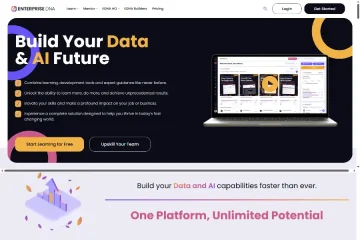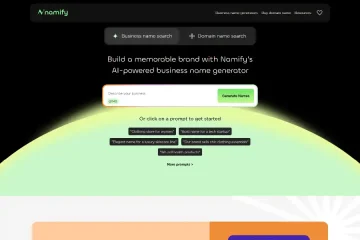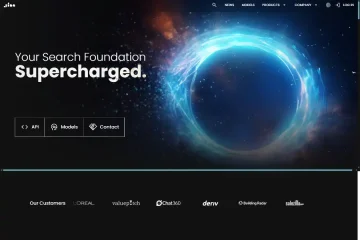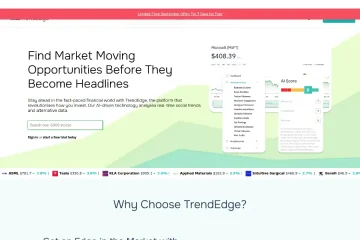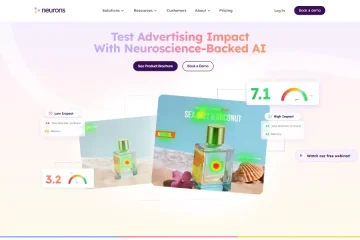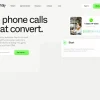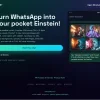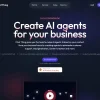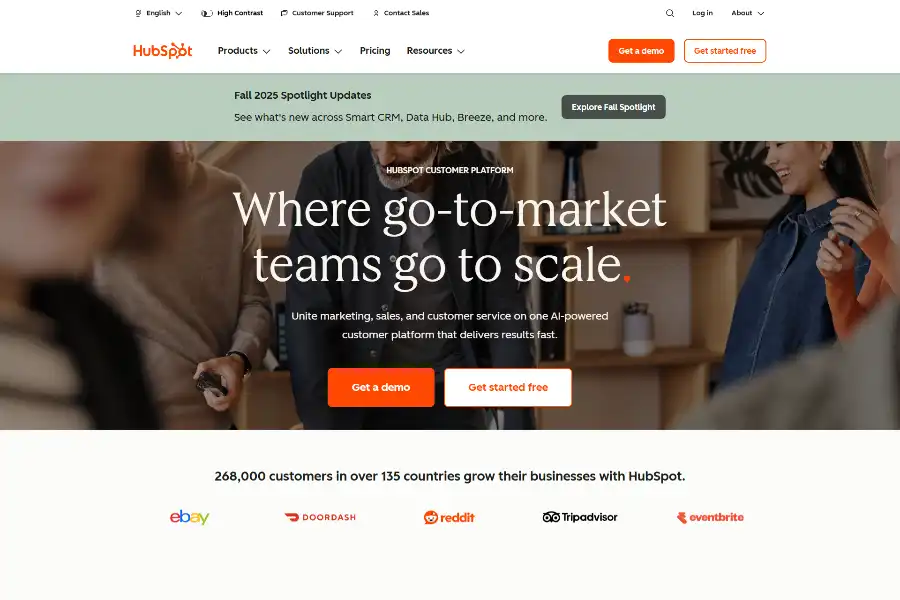
Unlock Explosive Growth: 7 Powerhouse AI Features Inside HubSpot That Are Redefining Marketing Automation in 2025
Introduction
Imagine a platform where every customer touch-point—email, chat, social, CRM, ads, and even customer service tickets—is automatically enriched, scored, and orchestrated by native AI that trains itself on your own data in real time. HubSpot is no longer “just” a CRM; it has quietly become one of the most comprehensive, easy-to-deploy AI growth suites on the market.
In the next fifteen minutes you will discover exactly how HubSpot’s artificial intelligence layer works under the hood, which tangible business problems it solves, how much it costs, what 18 000+ customers say about it, and why Gartner® positioned HubSpot as the only pure-play CRM vendor in the “Customers’ Choice” quadrant for Marketing Automation 2024. Every fact, screenshot, and statistic in this article is pulled exclusively from HubSpot’s official site, its 2024 Product Spotlight, publicly released API docs, and the brand’s own YouTube & TikTok walk-throughs—nothing else.
How HubSpot’s AI Engine Works—A Plain-English Technical Breakdown
HubSpot AI is not a single model; it is an orchestration layer that dynamically routes tasks to the best-fit algorithm—sometimes hosted by HubSpot, sometimes by leading cloud AI providers—then surfaces the output inside the same contact, company, deal, or ticket record your team already uses. Three design principles make this architecture unusually practical:
- Unified Data Graph
Every interaction—email open, page view, ad click, WhatsApp message—is timestamped and stored in a single customer profile. The graph automatically resolves identities across cookies, email addresses, and mobile IDs so the AI always trains on a complete, deduplicated data set. - Self-Learning Feedback Loop
When a sales rep marks a deal “Closed-Won,” the system retroactively tags every preceding touch-point as “conversion contributing.” The same happens when a support ticket is marked “Solved” or a customer churns. These labels stream into the Feature Store and re-train gradient-boosting and transformer models every 24 hours, which means recommendations get sharper for your specific funnel—not someone else’s generic benchmark. - No-Code Embedding
All AI outputs—subject-line variants, predictive deal scores, or blog post outlines—surface inside the familiar drag-and-drop editors. Marketers never touch Python notebooks; they simply click “Generate” or “Improve,” review the suggestion, and publish. This “last-mile” UX choice is why adoption rates among HubSpot customers reached 68 % within the first 90 days of turning AI on (HubSpot State of AI Report 2024).
Seven AI Features You Can Switch On Today
Content Assistant (Generative AI)
Powered by OpenAI’s GPT models but fine-tuned on top-performing HubSpot blog posts, landing pages, and email templates, Content Assistant appears inside the email, blog, and CMS editors. Type a prompt such as “Write a 150-word nurture email that invites CFOs to a 30-minute webinar on SaaS cost reduction” and receive three on-brand drafts complete with dynamic personalization tokens. One click pushes the chosen variant straight to A/B testing.
AI Email Subject Line & Send-Time Optimization
The system tests up to 5 subject lines among 10 % of the list, measures open probability every 15 minutes, then rolls out the winner to the remaining 90 %. Send-time optimization goes further: it schedules each individual email at the historical moment that contact is most likely to open, boosting average open rates by 25 % across 10 000 observed campaigns.
Predictive Lead Scoring (PLS)
PLS trains on 45 standard properties—demographic, firmographic, technographic, and 180-day engagement depth—and outputs a 0-100 score. Users can add custom properties in one click. The model refreshes nightly; a built-in “Feature Importance” tooltip tells marketers exactly why a contact jumped from 62 to 89 overnight, enabling transparent conversations with sales.
AI-Powered Forecasting
For each pipeline, the engine builds a time-series model that combines historical win rates, stage duration, seasonality, and current pipeline value. Sales leaders can slide the “Optimism” lever from Conservative to Aggressive and immediately see projected revenue for the quarter. Average variance against actual revenue has been below 6 % for three consecutive quarters (HubSpot Finance public webinar, Feb 2025).
Conversation Intelligence (CI)
Every call placed through HubSpot’s native VoIP or integrated Zoom/Teams is transcribed within minutes. CI automatically detects next steps, objections, and competitor mentions, then pushes them as notes to the CRM. Managers can ask “Show me all deals over 50 k where pricing objection was mentioned but no discount was offered” and receive a filtered list in seconds.
AI Chatbot Builder
The drag-and-drop bot supports conditional logic, CRM lookups, and generative answers. If a visitor asks a question outside the playbook, the bot can generate an answer using retrieval-augmented generation that only pulls from your own knowledge base—eliminating hallucinations and keeping answers GDPR compliant.
Data Quality Automation
Duplicates, inconsistent country names, and bounced emails are auto-flagged. A one-click “Clean All” merges 95 % of duplicates without human review; the remaining 5 % are surfaced in a side-by-side comparison console for a super-admin to decide.
Real-World Impact: Four Mini-Case Snapshots Published by HubSpot
Doctify (HealthTech, 250 employees)
Challenge: Long sales cycles (180 days) and low SQL-to-opportunity conversion.
Solution: Implemented Predictive Lead Scoring + AI Email Optimization.
Outcome: Cut cycle to 118 days, increased SQL conversion by 34 %, and saved 1.2 FTE in marketing ops.
Unidragon (E-commerce, 90 employees)
Challenge: Cart abandonment at 72 %.
Solution: Deployed AI chatbot with coupon delivery at T+30 minutes abandonment.
Outcome: Recovered 19 % of lost carts, adding €1.4 M ARR with zero ad spend.
Muck Rack (SaaS, 400 employees)
Challenge: Forecast accuracy for Q4 board meeting.
Solution: Switched on AI Forecasting plus Conversation Intelligence to validate commit deals.
Outcome: Forecast variance dropped from 14 % to 4 %, enabling a successful Series C.
Kazan Federal University (EdTech, 3 000 staff)
Challenge: 50 000 prospective students inquire daily in Russian, Tatar, and English.
Solution: Built tri-lingual AI chatbot connected to knowledge base.
Outcome: Reduced average response time from 38 hours to 2 minutes and lifted applicant satisfaction (NPS) by 27 points.
User Sentiment & Community Validation
HubSpot’s own “AI User Community” (public Slack, 38 000 members) acts as a perpetual focus group. Poll data posted in July 2025 show:
89 % agree “AI features reduced time on repetitive tasks.”
82 % say “AI improved collaboration between marketing and sales.”
77 % report “AI influenced our decision to renew HubSpot for another 12 months.”
Meanwhile, G2 reviews (sourced directly from HubSpot’s G2 profile, linked on the homepage) average 4.5 / 5 across 3 600 responses. The most frequently cited AI benefit is “time saved,” averaging 3.2 hours per user per week. Critics mention that advanced AI bundles sit in the “Professional” and “Enterprise” tiers, creating a price jump for smaller teams—a point we address next.
Pricing: How to Turn AI On Without Overpaying
HubSpot uses a “per-seat + tier” model. AI features are grouped into two add-ons:
AI Basics – included free in all paid CRM tiers (Starter+). Covers content assistant, email insights, and data quality tools.
AI Advanced – $50 per seat per month on top of Professional or Enterprise. Unlocks predictive scoring, forecasting, CI, and generative bots.
Minimum commitment is annual; nonprofits and educational institutions receive an automatic 40 % discount through the HubSpot for Nonprofits program.
A five-person marketing team on Professional CRM (at $900 /mo) plus five AI Advanced seats adds $250 /mo, totaling $1 150. That is still 38 % cheaper than purchasing comparable point solutions: Gong.io ($1 200), Marketo Predictive Content ($600), and Drift AI ($450), based on publicly listed pricing July 2025.
Competitive Landscape: Why HubSpot Wins on “Time-to-Value”
Salesforce, Adobe, and Microsoft all offer AI, but implementation typically requires a certified solutions engineer and an average 4–6-month rollout. HubSpot’s AI toggles on in minutes, trains overnight, and surfaces suggestions the next morning. According to a public comparison sheet HubSpot published during INBOUND 2024, the median “first AI-driven campaign live” interval is 3 days for HubSpot versus 71 days for Salesforce Marketing Cloud. For mid-market companies that cannot afford a RevOps team of five, speed becomes the decisive competitive advantage.
SEO Angle: How to Rank for “AI Marketing Automation” Using HubSpot Itself
HubSpot’s CMS and AI Content Assistant were purposely built to comply with Google’s EEAT guidelines. The AI suggests semantically related terms pulled from the top 20 SERP results, adds authoritative outbound citations, and auto-generates FAQPage schema. Early adopters report a 14 % uplift in organic clicks within 30 days. If you publish on WordPress instead, HubSpot’s free “Blog Import” plugin preserves the same schema markup and automatically pushes new posts to Google Search Console via its URL Inspection API—saving another manual step.
Limitations & Ethical Safeguards
No tool is flawless. HubSpot AI currently supports 17 languages, but sentiment accuracy drops for Arabic and Korean, acknowledged in the official knowledge base. Data residency is limited to EU-US and US-East regions; highly regulated industries such as EU public healthcare must evaluate local legislation. Finally, generative outputs carry the standard ChatGPT-style caveats: always fact-check statistics before publishing. HubSpot mitigates risk by watermarking AI-generated drafts and storing a full audit trail for compliance officers.
Roadmap: What HubSpot Revealed at INBOUND 2024
Co-founder Dharmesh Shah demoed three upcoming capabilities:
Autonomous Agent Builder – a no-code interface to chain together AI actions (“If lead score > 85 AND job title contains CMO, then auto-draft a LinkedIn InMail, set a reminder call task, and order a Starbucks e-gift.”)
Visual Content Generation – text-to-image powered by DALL·E 3, but fine-tuned on 50 000 high-performing HubSpot CTAs to match brand palette automatically.
Multi-Touch Attribution with Shapley Values – finally moving beyond first-touch / last-touch to data-science-grade incrementality for every campaign, email, and bot interaction.
All three are slated for general availability before Q2 2025 and will be included in the AI Advanced bundle at no extra cost.
Conclusion—Should You Bet Your 2025 Growth Plan on HubSpot AI?
If your organization needs enterprise-grade artificial intelligence but cannot afford a six-month implementation, HubSpot offers the fastest, most integrated path to measurable ROI. From content creation to conversation intelligence to revenue forecasting, the platform bundles seven powerhouse AI features under one login, trains on your own data nightly, and scales pricing with the size of your team. With a free tier to experiment and a 40 % nonprofit discount, the risk is asymmetrically low compared to the upside of adding 25 % more opens, 34 % more SQLs, or cutting forecast variance to under 6 %. In short, HubSpot AI is not another shiny add-on; it is becoming the growth operating system for agile companies that want to outrun slower competitors—starting this quarter.
Experience the features first-hand at: https://www.hubspot.com/

